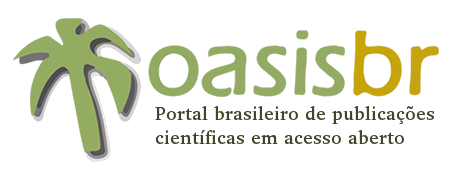Three objections to the use of violence in defence of nonhuman animals and why they fail
DOI:
https://doi.org/10.18012/arf.v10i3.65765Keywords:
Animal Liberation Front, Nonhuman Animal Rights, Interspecies Activism, TerrorismAbstract
In this paper I address the three main objections commonly raised to disavow the use of violence in defence of nonhuman animals. There is the idea that violence is inherently wrong and should always be repudiated – I call this the ‘Absolute Pacifist Objection’. There is also the view that using violence by interspecies activists alienates the general public from the nonhuman animal rights movement as a whole – I refer to this one as the ‘Public Hostility Objection’. Finally, there is this argument within the interspecies studies literature that using violence on behalf of nonhuman animals is counterproductive, for violent tactics would be responsible for the enactment of laws that protect those who exploit nonhuman animals and criminalize the actions of interspecies activists – that one is the ‘Noticeable Counterproductiveness Objection’. After presenting each one of those objections, I will explain why none of them can actually provide a knockdown argument against the use of violent strategies in favour of members of other sentient animal species.
Downloads
References
AGENCE FRANCE-PRESSE. “The Hollywood A-list behind militant anti-whaling group”. ABS-CBN News, 07 de Janeiro de 2010. Disponível em: <http://news.abs-cbn.com/world/01/07/10/hollywood-list-behind-militant-anti-whaling-group>. Accesso em: 09/02/2023.
ANIMAL LIBERATION PRESS OFFICE. “The ALF Primer”. Third Edition. Animal Liberation Press Office, [s.d.]. Disponível em: <https://animalliberationpressoffice.org/publications%20online/ALF_Primer_3rdEdition_IMPOSED.pdf>, pp. 1-14. Accesso em: 09/02/2023.
ANDREWS, Paul L. R. et al. The identification and management of pain, suffering and distress in cephalopods, including anaesthesia, analgesia and humane killing. Journal of Experimental Marine Biology and Ecology, v.447, pp. 46-64, set. 2013
BALCOMBE, Jonathan. What a fish knows: the inner lives of our underwater cousins. London: Oneworld Publications, 2016.
BEST, Steven. The politics of total liberation: revolution for the 21st century. Basingstoke: Palgrave McMillan, 2014.
BRAITHWAITE, Victoria. Do Fish Feel Pain? New York: Oxford University Press, 2010.
BROOM, Donald M. Considering Animals’ Feelings. Animal Sentience, v. 5, n. 1, pp. 1-12, 2016.
BROOM, Donald M. Sentience and animal welfare. Wallingford: CABI Publishing, 2014.
CHURCHILL, Ward; RYAN, Mike. Pacifism as pathology: reflections of the role of armed struggle in North America. Edinburgh: AK Press, 2007.
COATES, Anthony Joseph. The ethics of war. Manchester: Manchester University Press, 1997.
COCHRANE, Alasdair. Animal rights without liberation: applied ethics and human obligations. New York: Columbia University Press, 2012.
COLB, Sherry F.; DORF, Michael C. Beating hearts: abortion and animal rights. New York: Columbia University Press, 2016.
DAWN, Karen. From the front line to the front page – an analysis of ALF media coverage. In: BEST, Steven; NOCELLA II, Anthony J. (Eds.) Terrorists or freedom fighters? Reflections on the liberation of animals. New York: Lantern Books, 2004. pp. 213-229.
DEGRAZIA, David. Animal rights: a very short introduction. Oxford: Oxford University Press, 2002.
DEGRAZIA, David. Taking animals seriously: mental life and moral status. New York: Cambridge University Press, 1996.
DELLA ROCCA, Giorgia et al. Pain and suffering in invertebrates: an insight on cephalopods. American Journal of Animal and Veterinary Sciences, v. 10, n. 2, pp. 77–84, 2015.
DEMELLO, Margo. (Ed.) Human–Animal studies: a bibliography. New York: Lantern Books, 2012.
ELISE, Travis. Anti-capitalism and abolitionism. In: SOCHA, Kim; BLUM, Sarah-Jane: (Eds.). Confronting animal exploitation: grassroots essays on liberation and veganism. Jefferson: McFarland & Company, 2013. pp. 22-44.
ELWOOD, Robert W. Pain and suffering in invertebrates? ILAR Journal, v. 52, n. 2, pp. 175-184, 2011.
ELWOOD, Robert W. et al. Pain and stress in crustaceans? Applied Animal Behaviour Science, v. 118, n. 3-4, pp. 128-136, 2009.
EXPRESS. “Police on ‘tightrope’ at protests. Express. Terça-feira, 23 de Novembro de 2010. Disponível em: <https://www.express.co.uk/news/uk/213231/Police-on-tightrope-at-protests>. Accesso em: 09/02/2023.
FIALA Andrew G. ‘Pacifism’. Stanford Encyclopedia of Philosophy, 2018. Disponível em: <https://plato.stanford.edu/entries/pacifism/>. Acesso em: 09/02/2023.
FIALA, Andrew G. The just war myth: the moral illusions of war. Lanham: Rowman and Littlefield. 2008.
FRANCIONE, Gary L. “Ahimsa and Veganism”. Jain Digest. Winter 2009. Disponível em: <http://www.abolitionistapproach.com/media/pdf/Ahimsa.pdf>. Accesso em: 09/02/2023.
FRANCIONE, Gary L. “Ahimsa in Jainism and the Moral Imperative of Veganism”. Vegan Jains. Disponível em: <https://veganjains.files.wordpress.com/2014/05/essayforahimsacollection.pdf>, 2014. Accesso em: 09/02/2023.
FRANCIONE, Gary L. Introduction to animal rights: your child or the dog? Philadelphia: Temple University Press, 2000.
FRANCIONE, Gary L. The abolition of animal exploitation. In: FRANCIONE, Gary L.; GARNER, Robert. The animal rights debate: abolition or regulation? New York: Columbia University Press, 2010. pp. 1-103.
FRANCIONE, Gary L. Why veganism matters: the moral value of animals. New York: Columbia University Press, 2020.
FRANCIONE, Gary L.; CHARLTON, Anna. Animal rights: the abolitionist approach. Logan: Exempla Press, 2015.
GERMAN, Michael. Thinking like a terrorist: insights of a former FBI undercover agent. Washington, D.C.: Potomac Books, 2007.
GRUEN, Lori. Ethics and animals: an introduction. Cambridge: Cambridge University Press, 2011.
HENSHAW, David. Animal warfare: the story of the Animal Liberation Front. London: Fontana, 1989.
HITCHENS, Christopher. God is not great: how religion poisons everything. New York: Twelve, 2009.
HOLDEN, Constance. A pivotal year for lab animal welfare. Science, v. 232, n. 4747, pp. 147-150, 1986a.
HOLDEN, Constance. Centers targeted by activists. Science, v. 232, n. 4747, p. 149, 1986b.
HORVATH, Kelsey et al. Invertebrate welfare: an overlooked issue. Annali Dell’Istituto Superiore Di Sanità, v. 49, n. 1, pp. 9-17, 2013.
H. R. 2407. 102nd Congress. Animal Enterprise Protection Act of 1992. Disponível em: <https://www.congress.gov/bill/102nd-congress/house-bill/2407>. Acesso em: 09/02/2023.
HUGGETT, Brady. When animal rights turn ugly. Nature Biotechnology, v. 26, n. 6, pp. 603-605, 2008.
ILLMAN, John. Animal rights violence spreads fear through U.K. research community. Journal of the National Cancer Institute, v. 97, n. 21, pp. 1565-1566, 2005.
ISACAT, Ben. How to do animal rights. Second Edition. Raleigh: Lulu, 2012.
JASPER, James M.; NELKIN, Dorothy. The animal rights crusade: the growth of a moral protest. New York: The Free Press, 1992.
KAUFMAN, Whitley R. P. Justified killing: the paradox of self-defense. Plymouth: Lexington Books, 2009.
LAMEY, Andy. Subjective experience and moral standing. Commentary on Klein & Barron on Insect Experience. Animal Sentience, v. 9, n. 7, pp. 1-3, 2016.
LINZEY, Andrew. Animal theology. Champaign: University of Illinois Press, 1995.
LINZEY, Andrew. Creatures of the same God: explorations in animal theology. New York: Lantern Press, 2009a.
LINZEY, Andrew. Putting our house in order. The Animals’ Agenda, September-October, 2001.
LINZEY, Andrew. Why animal suffering matters: philosophy, theology, and practical Ethics. Oxford: Oxford University Press, 2009b.
LOVITZ, Dara. Muzzling a movement: the effects of anti-terrorism law, money, and politics on animal activism. New York: Lantern Books, 2010.
MACCLELLAN, Joel P. Minding Nature: A Defense of a Sentiocentric Approach to Environmental Ethics. 2012. 353 f. Tese (Doutorado em Filosofia) – Department of Philosophy, University of Tennessee, Knoxville, 2012.
MAGEE, Barry; ELWOOD, Robert W. Shock avoidance by discrimination in the shore crab (Carcinus maenas) is consistent with a key criterion for pain. The Journal of Experimental Biology, v. 216, n. 3, pp. 353-358, 2013.
MARCEU, Justin F. Ag gag past, present, and future. Seattle University Law Review, v. 38, n. 4, pp. 1317-1344, 2015.
MARK, Patty. To free a hen. The Animals’ Agenda, v. 21, n. 4, pp. 25-26, 2001.
MOLLAND, Noel. Thirty years of direct action. In: BEST, Steven; NOCELLA II, Anthony J. (Eds.) Terrorists or freedom fighters? Reflections on the liberation of animals. New York: Lantern Books, 2004. pp. 67-75.
NARVESON, Jan. Is pacifism consistent? Ethics, v. 78, n. 2, pp. 148-150, 1968.
OLIVER, Daniel T. Animal rights: the inhumane crusade. Second Edition, Revised. Bellevue: Merril Press, 1999.
PANKHURST, Nigel. “Animal activists’ climate of fear”. BBC News. 23 de Dezembro de 2008. Disponível em: <http://news.bbc.co.uk/1/hi/uk/7797524.stm>. Accesso em: 09/02/2023.
PEW RESEARCH CENTER. “Public and Scientists’ Views on Science and Society”. Pew Research Center. 29 de Janeiro de 2015. Disponível em: <https://www.pewresearch.org/science/2015/01/29/public-and-scientists-views-on-science-and-society/>. Acesso em: 09/02/2023.
PHELPS, Norm. The great compassion: Buddhism and animal rights. New York: Lantern Books, 2004.
PUBLIC LAW 109-374. 109th Congress. Animal Enterprise Terrorism Act. 27 de Novembro de 2006. Disponível em: <https://www.govinfo.gov/content/pkg/PLAW-109publ374/pdf/PLAW-109publ374.pdf>. Acesso em: 09/02/2023.
PUGH, Martin. The pankhursts. London: Penguin Books, 2001.
PUSKAR-PASEWICZ, Margaret. Cultural encyclopedia of vegetarianism. Santa Barbara: Greenwood, 2010.
REGAN, Tom. Defending animal rights. Champaign: University of Illinois Press, 2006.
REGAN, Tom. Empty cages: facing the challenge of animal rights. Lanham, Maryland: Rowman & Littlefield. 2004.
RIFFKIN, Rebecca. “In U.S. More Say Animals Should Have Same Rights as People”. Gallup Poll Social Series. 15 de Maio de 2015. Disponível em: <http://www.gallup.com/poll/183275/say-animals-rights-people.aspx>. Accesso em: 09/02/2023.
ROBINSON, Paul H.; KURZBAN, Robert. Concordance and conflict in intuitions of justice. Minnesota Law Review, v. 91, pp. 1829-1907, 2007.
RYDER, Richard D. Animal revolution: changing attitudes towards speciesism. Oxford: Basil Blackwell, 1989.
RYDER, Richard D. Speciesism, painism, and happiness: a morality for the twenty-first century. Exeter: Imprint Academic, 2011.
SERIOUS ORGANIZED CRIME AND POLICE ACT OF 2005. Explanatory Notes. Chapter 15. Serious Organized Crime and Police Act. 2005. Disponível em: <http://www.wipo.int/edocs/lexdocs/laws/en/gb/gb182en.pdf>. Accesso em: 09/02/2023.
SINGER, Peter. Animal liberation: the definitive classic of the animal movement. Updated Edition. New York: Harper Perennial, 2009.
SINGER, Peter. Practical ethics. Third Edition. Cambridge: Cambridge University Press, 2011.
STALLWOOD, Kim. A personal overview of direct action in the United Kingdom and the United States. In: BEST, Steven; NOCELLA II, Anthony J. (Eds.) Terrorists or freedom fighters? Reflections on the liberation of animals. New York: Lantern Books, 2004. pp. 81-91.
VARNER, Gary. Personhood, ethics, and animal cognition: situating animals in Hare’s two-level utilitarianism. Oxford: Oxford University Press, 2012.
WATSON, Paul. Earthforce!: an Earth warrior’s guide to strategy. Los Angeles: Chaco Pres, 1993.
WILLET, Cynthia. Interspecies ethics. Columbia: Columbia University Press, 2014.
YOUNG, Peter. Animal Liberation Front: complete U.S. diary of actions, the first 30 years. [s.l.]: Warcry Communications, 2010.
Additional Files
Published
How to Cite
Issue
Section
License

This work is licensed under a Creative Commons Attribution 4.0 International License.
Journal general policy
1.This journal works under a Creative Commons License aplied to online journals. That icence can be read in the following link: Creative Commons Attribution 4.0 International (CC BY 4.0).
2.Accordingly to this License, a)the journal declares that authors hold the copyright of their articles without restrictions, and they can archieve them as post-print elsewhere. b)the journal allow the author(s) to retain publishing rights without restrictions.
Metadata Policy for information describing items in the repository
1. Anyone may access the metadata free of charge at anytime.
2.The metadata may be re-used in any medium without prior permission, even commercial purposes provided the OAI Identifier or a link to the original metadata record are given, under the terms of a CC BY license refered for the Journal.







































